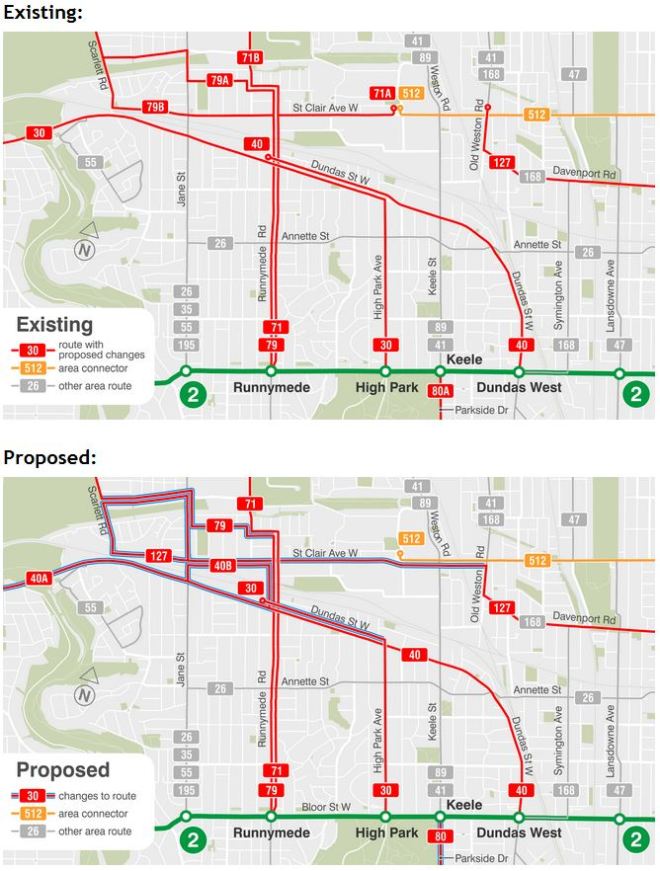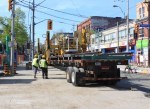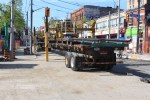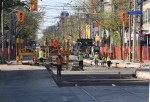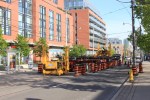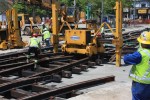The Ontario election on June 7, 2018, is vital for the future of Ontario and of its principal city, Toronto. We have a choice between a party well past it’s sell-by date, a collection of buffoons and crooks unfit to hold public office, and a party and leader growing into prominence just when Ontario needs them.
I am in the enviable position of being able to vote for the candidate and party I believe in without having to hold my nose and make a strategic vote. Many people are not that lucky, and a vote for their favourite can sometimes be a matter of showing the flag, and sometimes can actively help the “wrong” candidate to a win. Such are the joys of multi-party elections.
In my own riding, Toronto-Danforth, the choice is easy. Peter Tabuns has been the sitting NDP member since 2006, and served on the pre-amalgamation Toronto Council from 1990 to 1997. I have known Peter for a long time, and even when I despaired of the NDP as a party, I continued to trust and support him. He will easily get my vote again, and with that vote, my support for the NDP which has not wavered for many decades.
For all that the Liberals have done some good things, they have fouled up a great deal, especially on the transit file. Their embrace of dubious schemes like the Scarborough Subway, SmartTrack and now High Speed Rail to London and beyond, shows a “policy” driven by vote-getting, not by well-considered principles.
In the energy sector, the sale of Hydro One is only part of a larger set of decisions including high-cost “alternative” sources, the continued propping up of nuclear technology, and a failure to restructure the transmission system to permit expanded power imports from Québec. Ontario is paying a lot for its power, and this affects many decisions including transit schemes which once could count on cheap power as a selling point.
There is an even greater irony that, if a Metrolinx electrification background study is to be believed, the so-called “cheap” base generation power that could recharge energy storage systems does not have the capacity to meet future demand.
I first met Kathleen Wynne through mutual friends before she turned to politics. Her time as a school trustee rarely crossed my path in my work career at TDSB, but when she became the Minister of Transportation under McGuinty, there were occasional contacts, and she seemed to be making good work of her position. We chatted occasionally, but I was in no way an “insider”.
A few years after Wynne became Premier, she appointed Glen Murray to her old Ministry, and the style changed to claims over substance. Murray’s successor, Steven Del Duca, raised self-promotion to the point where Metrolinx existed as much to create endless photos ops as to do any real planning. Making the government, and especially the Minister, look good was their job even if they had to cook the books on a “business case analysis”.
Wynne’s star has faded, even with a strong performance in the recent leaders’ debate, but being in command of the issues is not the same as executing the programs needed to make a better province.
Many Liberal promises of 2018 should have been undertaken over a year ago, even at the risk of missing the balanced budget target, so that voters could see real change, real improvement. Near the end of its mandate, the Liberal government has rediscovered the need for programs that actually produce benefits people can see, but this comes far too late from a party whose promises cannot be trusted.
As for the Tories, the “Progressive” Conservatives, they and their leader don’t understand the meaning of the word. That once-moderate party has been hijacked by right-wing scum, racists, homophobes and criminals who advocate simplistic “solutions” to every problem without really saying what they will do or how they would pay the bills.
Doug Ford, when he is forced to make public statements, bumbles his way through standard lines, the same trick his late brother Rob pulled throughout his mayoral campaign. Don’t answer the question, just push those talking points.
I have seen Ford in action at City Council, and was in the chamber on that infamous day when he harangued the public gallery claiming we were there as paid agitators. That’s rich coming from someone whose own campaign used paid actors as “supporters” at a TV debate.
On the transit file, the Fords are notorious for their love of subways, subways, subways whether the city can afford to build and operate them or not. They played on the concept that every part of the city “deserves” a subway to the point that advocating anything else is now painted as a plot by privileged, white downtown elites. The same game is played by Doug at a provincial level blaming Toronto for everyone’s woes as long as he is safely outside of the city.
He is a bully and a liar, and does not deserve to be in public office, let along be Premier of Canada’s most important province. A Ford-PC government would set Ontario back years through rampant tax giveaways, spending cuts, and a vindictive, socially-conservative mindset that treats critics as enemies.
For their part, the NDP is not perfect – no party is – but they are on a better footing this time out.
The transit platform includes a 50% share of net costs of municipal transit operations, a return to a scheme initiated under that paragon of the PCs, Bill Davis. Unlike the previous NDP election platform, the 2018 version actually includes money to fund this promise, money that was conspicuously absent in the 2014 platform.
As to capital funding, there is some confusion as to whether the NDP would actively direct or oppose specific transit projects, or leave these decisions to local councils. That is a tricky problem for any party wishing to stay out of the morass of local transit politics, but some decisions, especially on priorities, will be needed. Simply handing money to each city and hoping for the best is no guarantee. Moreover, regional transportation requirements do not necessarily align with where people live and vote. That applies as much to the question of financing and building capacity into Toronto as an economic centre as it does to the need for much better transit in and between cities outside of the central GTA.
In many other sectors, the NDP starts from the premise that more services are needed – better housing, education, health care, energy – and they do not start by assuming that a private sector arrangement, complete with the off-book accounting favoured by the Liberals, is the answer to every problem.
As to labour relations, the NDP’s Achilles Heel, I find myself landing between the parties. No union, no company nor public agency should be able to hold a city or the province hostage as part of its negotiations. The problem, then, is to determine when an impasse really exists and should be legislated away, if only by arbitration.
Four years ago, Andrea Horwath did not impress me as a leader. She seemed insecure, evasive, and did not inspire my support. I voted for my local candidate, not for her. The Liberals under Kathleen Wynne looked like they would accomplish at least part of a decent program, while the NDP was more about slogans.
Things have changed. Horwath is more confident and has evolved into a leader who talks to all of Ontario, not just to her home town Hamilton. She has the advantage of two opponents whose records are of wasted opportunity in one case, and of simple-minded boosterism and appeals to the lowest of motives among voters in the other.
As I write this, the battle of the pollsters shows the NDP on the rise, but more is needed to overtake the PCs, even for a minority government with Liberal support. On June 7, I hope that Ontario will prove that it cares about decency and integrity in politics, and puts Andrea Horwath in the Premier’s Office.



